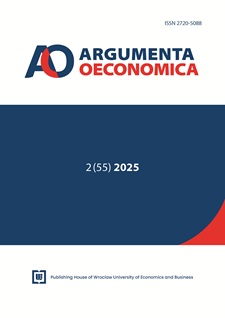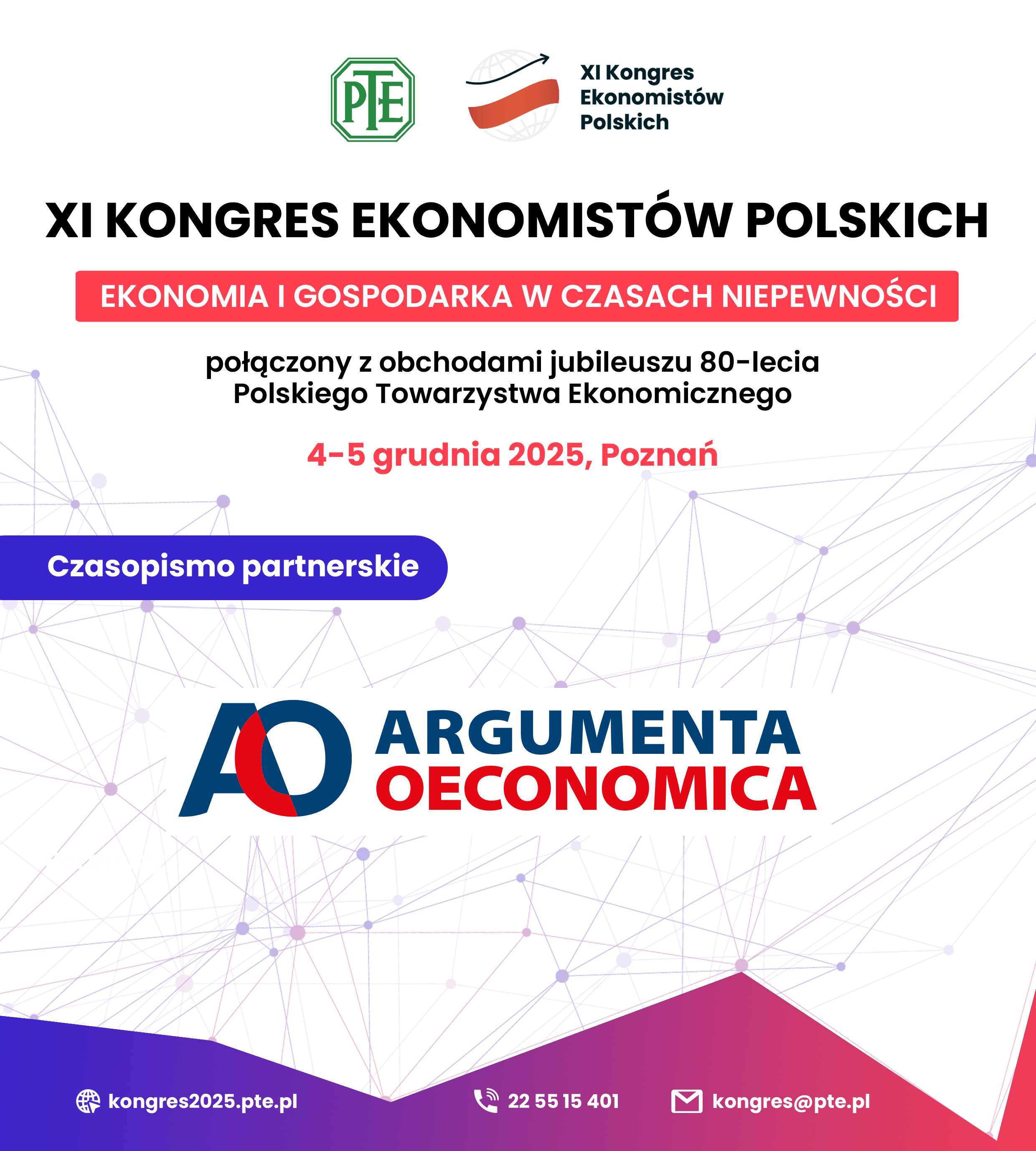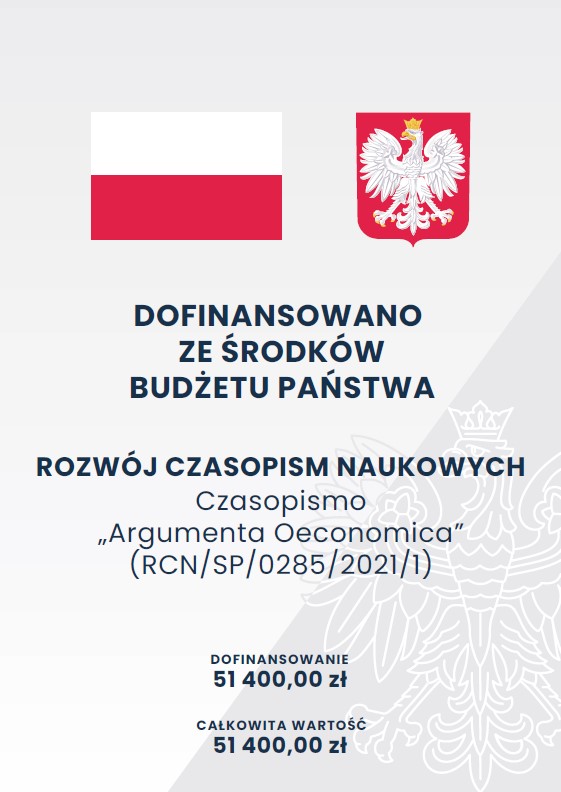Barriers to exports of travel services: the role of visa regimes
DOI:
https://doi.org/10.15611/aoe.2025.2.05Keywords:
travel services export, tourism, gravity model, visa liberalisationAbstract
Aim: This paper aims to explore the role of visa liberalisation in promoting tourism flows by quantifying the effects of changes in visa regimes.
Methodology: The author focused on Serbia studied in the period between 2006 and 2019, which represents an interesting case as Serbia increased then its integration efforts, opening its economy and changing the visa regime toward numerous countries, providing an opportunity of identifying the effects of visa liberalisation. An extended gravity model was estimated using a sample of travel services exports from Serbia to its 188 partner economies in the aforesaid period employing the Poisson pseudo-maximum likelihood estimators.
Results: It was found that visa liberalisation had a statistically significant positive effect on travel services exports. Moreover, the effect was more pronounced for exports to geographically more distant and higher-income economies.
Implications and recommendations: The study revealed interesting patterns of travel services exports and their determinants which could have useful implications for policymakers. For instance, the results implied that travel services exports could be significantly increased by liberalising the visa regime towards high potential market economies. The study also pointed to the price sensitivity of tourists visiting Serbia and shed light on the effects of cultural factors on tourism flows.
Originality/value: This research innovatively applied the gravity model to analyse travel services exports, filling a notable gap in tourism studies. By focusing on a previously unexplored research sample, in particular on the economy undergoing significant visa liberalisation changes, the study provided a nuanced understanding of the relationship between policy shifts and tourism dynamics. This approach contributes to the adaptability of the gravity framework of international trade in the context of tourism economics and offers valuable insights for policymakers.
Downloads
References
Adeola, O., & Evans, O. (2020). ICT, infrastructure, and tourism development in Africa. Tourism Economics, 26(1), 97-114. https://doi.org/10.1177/1354816619827712
Anderson, J. E., & van Wincoop, E. (2004). Trade costs. Journal of Economic Literature, 42(3), 691-751. https://doi.org/10.1257/0022051042177649
Artal-Tur, A., Requena-Silvente, F., & Pallardó-López, V. J. (2016). Examining the impact of visa restrictions on international tourist flows using panel data. Estudios de Economía, 43(2), 265-279.
Balaguer, J., & Cantavella-Jorda, M. (2002). Tourism as a long-run economic growth factor: The Spanish case. Applied Economics, 34(7), 877-884.
Bangwayo-Skeete, P. F., & Skeete, R. W. (2017). Who travels visa-free? Insights into tourist hassle-free travel. Journal of Travel Research, 56(3), 407–418.
Beenstock, M., Felsenstein, D., & Rubin, Z. (2015). Visa waivers, multilateral resistance and international tourism: Some evidence from Israel. Letters in Spatial and Resource Sciences, 8(3), 357-371. https://doi.org/10.1007/s12076-015-0137-3
Bertoli, S., & Moraga, J. F.-H. (2012). Visa policies, networks and the cliff at the border. Documento de Trabajo 2012-12 December 2012. Fedea.
Bertoli, S., & Moraga, J. F.-H. (2013). Multilateral resistance to migration. Journal of Development Economics, 102, 79-100. https://doi.org/10.1016/j.jdeveco.2012.12.001
Bjelić, P., Jaćimović, D., Kastratović, R., & Baćović, M. (2023). Export of travel services in Western Balkans: A gravity model approach. Eastern European Economics, 1-25. https://doi.org/10.1080/00128775.2023.2284929
Bjelić, P., Marković, I., & Popović Petrović, I. (2012). Transnational companies and a changing structure of international trade. Montenegrin Journal of Economics, 8(4), 61-77.
Burger, M., Van Oort, F., & Linders, G.-J. (2009). On the specification of the gravity model of trade: Zeros, excess zeros and zero-inflated estimation. Spatial Economic Analysis, 4(2), 167-190.
Czaika, M., de Haas, H., & Villares‐Varela, M. (2018). The global evolution of travel visa regimes. Population and Development Review, 44(3), 589.
Dritsakis, N. (2004). Tourism as a long-run economic growth factor: An empirical investigation for Greece using causality analysis. Tourism Economics, 10(3), 305-316.
Karaman, A. S. (2016). The pernicious impact of visa restrictions on inbound tourism: The case of Turkey. Turkish Studies, 17(3), 502-524. https://doi.org/10.1080/14683849.2016.1170602
Kastratović, R., & Bjelić, P. (2023). The effectiveness of bilateral investment treaties in attracting foreign direct investment: The case of Serbia. Economic Annals, 68(237), 37-68.
Khalid, U., Okafor, L. E., & Burzynska, K. (2021). Do regional trade agreements enhance international tourism flows? Evidence from a cross-country analysis. Journal of Travel Research, 61(6), 1391-1408. https://doi.org/10.1177/00472875211028321
Lawson, R., & Lemke, J. (2012). Travel visas. Public Choice, 153, 17-36. https://doi.org/10.1007/s11127-011-9771-5
Lawson, R. A., & Roychoudhury, S. (2016). Do travel visa requirements impede tourist travel? Journal of Economics and Finance, 40, 817-828. https://doi.org/10.1007/s12197-015-9343-5
Li, S., & Song, H. (2013). Economic impacts of visa restrictions on tourism: A case of two events in China. Annals of Tourism Research, 43, 251-271. https://doi.org/10.1016/j.annals.2013.07.007
Liu, A., & McKercher, B. (2016). The impact of visa liberalization on tourist behaviors − the case of China outbound market visiting Hong Kong. Journal of Travel Research, 55(5), 603-611. https://doi.org/10.1177/0047287514564599
Luedtke, A., Byrd, D. G., & Alexander, K. P. (2010). The politics of visas. The Whitehead Journal of Diplomacy and International Relations, 11(1), 147-160.
Marrocu, E., & Paci, R. (2011). They arrive with new information. Tourism flows and production efficiency in the European regions. Tourism Management, 32(4), 750-758.
Morley, C., Rosselló, J., & Santana-Gallego, M. (2014). Gravity models for tourism demand: Theory and use. Annals of Tourism Research, 48, 1-10. https://doi.org/10.1016/j.annals.2014.05.008
Neumayer, E. (2006). Unequal access to foreign spaces: How states use visa restrictions to regulate mobility in a globalized world. Transactions of the Institute of British Geographers, 31(1), 72-84.
Neumayer, E. (2010). Visa restrictions and bilateral travel. The Professional Geographer, 62(2), 171-181. https://doi.org/10.1080/00330121003600835
Neumayer, E. (2011). On the detrimental impact of visa restrictions on bilateral trade and foreign direct investment. Applied Geography, 31(3), 901-907. https://doi.org/10.1016/j.apgeog.2011.01.009
Prehn, S., Brümmer, B., & Glauben, T. (2016). Gravity model estimation: Fixed effects vs. random intercept Poisson pseudo-maximum likelihood. Applied Economics Letters, 23(11), 761-764. https://doi.org/10.1080/13504851.2015.1105916
Ramsey, J. B. (1969). Tests for specification errors in classical linear least‐squares regression analysis. Journal of the Royal Statistical Society: Series B (Methodological), 31(2), 350-371.
Rosselló, J., & Santana-Gallego, M. (2024). The effect of visa types on international tourism. Economic Modelling, 137, 106757. https://doi.org/10.1016/j.econmod.2024.106757
Santana-Gallego, M., Ledesma-Rodríguez, F. J., & Pérez-Rodríguez, J. V. (2016). International trade and tourism flows: An extension of the gravity model. Economic Modelling, 52, 1026-1033. https://doi.org/10.1016/j.econmod.2015.10.043
Sheng, L., Yin, Y., Zhang, A., Wu, J., & Yang, J. (2023). Modelling casino hospitality business cycles. Argumenta Oeconomica, 50(1), 33-41.
Silva, J. S., & Tenreyro, S. (2006). The log of gravity. The Review of Economics and statistics, 88(4), 641-658.
Tham, S. Y., Khoon Goh, S., Wong, K. N., & Fadhli, A. (2018). Bilateral export trade, outward and inward FDI: A dynamic gravity model approach using sectoral data from Malaysia. Emerging Markets Finance and Trade, 54(12), 2718-2735. https://doi.org/10.1080/1540496X.2017.1402176
Tinbergen, J. (1962). Shaping the world economy: Suggestions for an international economic policy. The Twentieth Century Fund.
Ulucak, R., Yücel, A. G., & İlkay, S. Ç. (2020). Dynamics of tourism demand in Turkey: Panel data analysis using gravity model. Tourism Economics. https://doi.org/10.1177/1354816620901956
van Goeverden, C. D., van Nes, R., & van Arem, B. (2019). A classification of the long-distance travel market. Paper presented at the BIVEC-GIBET Transport Research Days 2019. http://resolver.tudelft.nl/uuid:225a87e3-2aab-4b22-add5-a8e542debd86
World Tourism Organization. (2012). The impact of visa facilitation on job creation in the G20 economies. Report prepared for the 4th T20 Ministers' Meeting. Mexico City.
World Tourism Organization. (2013). Tourism visa openness report: Visa facilitation as means to stimulate tourism growth. UNWTO.
World Travel & Tourism Council. (2022). Travel and tourism economic impact global trends. World Travel & Tourism Council.
Xu, L., Wang, S., Li, J., Tang, L., & Shao, Y. (2019). Modelling international tourism flows to China: A panel data analysis with the gravity model. Tourism Economics, 25(7), 1047-1069. https://doi.org/10.1177/1354816618816167
Downloads
Published
License
Copyright (c) 2025 Radovan Kastratović, Ivana Popović Petrović, Predrag Bjelić

This work is licensed under a Creative Commons Attribution-ShareAlike 4.0 International License.
Accepted 2024-09-29
Published 2025-09-24








